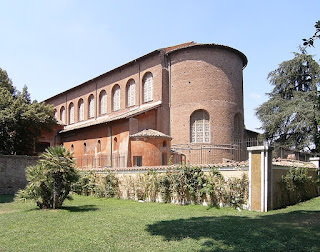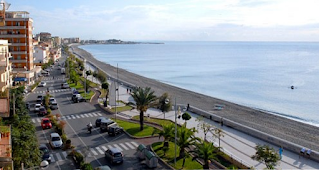Title-winning Leicester City boss is 65 today
 |
| Claudio Ranieri |
Ranieri, who won the English Premier League last season with rank outsiders Leicester City, has managed 14 clubs in four countries in a 30-year career in coaching. He also had a stint in charge of the Greece national team.
Among the teams he has coached are a host of big names - Internazionale, Juventus, Roma, Napoli and Fiorentina in Italy, Atletico Madrid and Valencia in Spain, Monaco in France and Chelsea in England.
He has won titles in lower divisions as well as Italy's Coppa Italia and the Copa del Rey in Spain but until Leicester defied pre-season odds of 5,000-1 to win the Premier League, a major league championship had eluded him. He had finished second three times, with Chelsea, Roma and Monaco.
Before turning to coaching, Ranieri was a player for 14 seasons. He began in Serie A with home-town club Roma, but enjoyed more success in the lower divisions, enjoying promotion twice with the Calabrian club Catanzaro, where he spent the biggest part of his career, and once each with the Sicilian teams Catania and Palermo.
Ranieri was born in the San Saba district of Rome, not far from the ancient Baths of Caracalla and Circus Maximus in an area teeming with Roman ruins. His father, Mario, was a butcher in neighbouring Testaccio, one of Rome's traditional working class neighbourhoods. His mother, Renata, now 96, still lives in Rome and Claudio regularly flies home to see her.
Where Testaccio, now increasingly popular with Rome's young professionals, was designed and built with blue collar workers in mind, San Saba is more middle-class historically, an area of houses rather than apartment buildings, with more urban green spaces such as the Piazza Gian Lorenzo Bernini, where Claudio and his friends would play football.
 |
| Claudio Ranieri celebrates with Leicester City's prolific striker Jamie Vardy |
A Roma fan for as long as he can remember, Ranieri dreamed of playing for the giallorossi and after being spotted by a scout he realised his ambition. He was taken on for a trial, given a contract and made his debut in November 1973 as a defender. He was unfazed by playing in front of 80,000 fans and continuing to help out in the family business on his day off kept him grounded.
Sadly, the dream did not turn into a place in Roma folklore, as the young Ranieri might have hoped. By the following summer, having made just six appearances, it was clear he was not going to be in the team on a regular basis and he moved to the deep south of Italy to Catanzaro, in the part of Calabria that sits in the arch of the boot on the map of Italy, to play in Serie B.
It was a world away from the frenzied pace of Roman life and Ranieri felt a little like an alien but the eight years he spent there shaped his life in many ways.
Catanzaro's team included many outsiders and they formed a bond of friendship that remains strong to this day. Indeed, until recently, the team's goalkeeper, Giorgio Pellizzaro, was Ranieri's specialist goalkeeping coach.
They became a good team on the field, too, winning promotion to Serie A twice in his time there, the second time staying for five years.
Off the field, it was while playing for Catanzaro that Ranieri met his wife, Rosanna, the daughter of a football journalist. The couple had a daughter, Claudia and bought a villa at nearby Copanello, overlooking the Ionian Sea, where they still spend their summers. Ranieri also has a house at Formello, a town about 30km north of Rome in the Monti Sabatini area of Lazio.
 |
| Ranieri's son-in-law, the actor Alessandro Roja |
Ranieri's character, well-mannered, good humoured, calm under pressure, is said by some to be more typically Calabrian than Roman but, as the Italian writer Gabriele Marcotti explains in an excellent biography - Hail, Claudio! - to be published next month, there is a steel behind the charm.
An example came when he had left Catanzaro for Catania, where he was made captain. When the manager, the former Catanzaro player Gianni di Marzio, was sacked after Catania, newly promoted, had made a poor start in Serie A, Ranieri was so furious he stormed into the office of the club president to make his feelings known, and repeated them in a television interview soon afterwards.
He was sure he would be sacked as well for speaking his mind and effectively humiliating the president, an autocratic millionaire not known for his patience. Instead, after recovering from the shock, the president decided that if Ranieri was man enough to stand up to him in that way he was too good an asset to lose.
UPDATE: Since leaving Leicester City in 2017, Ranieri has increased the number of coaching positions he has held to 21. As of his 72nd birthday on October 20, 2023, he was in charge of Serie A club Cagliari for the second time in his career.
Travel tip:
The Aventine Hill, which Ranieri knew well as a boy, has many attractions, apart from the ruins of the Roman chariot racing stadium, Circus Maximus, and the Baths of Caracalla. The historic Basilica of Santa Sabina, which dates back to the fifth century, is just one of several notable churches, while the area's elevated position offers outstanding views of the Rome, particularly from the Giardino degli Aranci (Garden of Oranges), overlooking the Tiber. A more unusual view is to be had from the Villa del Priorato di Malta, on Piazza dei Cavalieri di Malta, where crowds gather to peer through the keyhole in the wooden doors at the main gate, which provides a perfectly framed view of the dome of St Peter's Basilica.
 |
| The original structure of the Basilica of Santa Sabina dates back to the fifth century |
The Aventine Hill, which Ranieri knew well as a boy, has many attractions, apart from the ruins of the Roman chariot racing stadium, Circus Maximus, and the Baths of Caracalla. The historic Basilica of Santa Sabina, which dates back to the fifth century, is just one of several notable churches, while the area's elevated position offers outstanding views of the Rome, particularly from the Giardino degli Aranci (Garden of Oranges), overlooking the Tiber. A more unusual view is to be had from the Villa del Priorato di Malta, on Piazza dei Cavalieri di Malta, where crowds gather to peer through the keyhole in the wooden doors at the main gate, which provides a perfectly framed view of the dome of St Peter's Basilica.
 |
| The waterfront at Catanzaro Lido, which can be found 15km (9 miles) from the city of Catanzaro |
Occupying a position 300mt (980ft) above the Gulf of Squillace, Catanzaro is known as the City of the Two Seas because, from some vantage points, it is possible to see the Tyrrhenian Sea to the north of the long peninsula occupied by Calabria as well as the Ionian Sea to the south. The historic centre, which sits at the highest point of the city, includes a 16th century cathedral built on the site of a 12th century Norman cathedral which, despite being virtually destroyed by bombing in 1943, has been impressively restored. The city is about 15km (9 miles) from Catanzaro Lido, which has a long white beach typical of the Gulf of Squillace.
More reading:
Internazionale - how the Milan football team was founded
Fabio Capello - veteran manager won Serie A five times
Italy's World Cup winning coach Marcello Lippi
Roman ruins inspired Gibbon's epic Decline and Fall
Fabio Capello - veteran manager won Serie A five times
Italy's World Cup winning coach Marcello Lippi
Roman ruins inspired Gibbon's epic Decline and Fall
Books:
Hail, Claudio! The Man, The Manager, The Miracle, by Gabriele Marcotti (Yellow Jersey)
(Photo of Alessandro Roja by Laura Penna CC BY 2.0)
(Photo of the view from the Giardino degli Aranci by Marten253 CC BY-SA 3.0)
Home




























